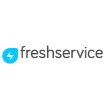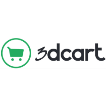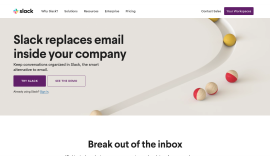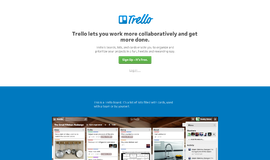Taking Your SaaS Solution Global
The process of localization is so much more than simply translating the words on your website. It is a lengthy project that involves adapting your product or service to a particular culture, language, and a corresponding look & feel.
It’s a delicate procedure to say the least.
When you initially launch your app, the whole user experience and marketing strategy is probably tailored to a few major global markets (think North America, Western Europe, Australia, etc).
But make no mistake: even smaller countries can have an impressive overall effect on your growth. In Megaventory’s case, for example, almost half of our paid accounts are from small markets, each making up less than a 3% of our total business.
So if you wish to scale and gain users from all over the world, flexibility is key.
Here are 5 ways to make sure you’re localizing and leveraging your access to more business from around the world.
1. App Localization
Too many SaaS startups disregard this simple notion: your app, your website, and your landing pages should be targeted to more than just English speakers.
Ideally, the architecture of your application allows for relatively easy access and implementation into separate markets and separate languages (e.g. the UI of your application ensures that words and strings of different lengths can fit in the buttons or text fields). So localizing may be as simple as translating all your app strings into those languages.
You probably don’t speak German, French, Spanish, and Arabic (or maybe you do), so a good place to find translators is outsourcing marketplaces like Elance or Odesk. With some careful project management and supervision, you’ll likely be impressed with the quality of the results.
There are also more expensive premium translation services which are field-specific and professionals there will actually use your application before finding the most appropriate translation of each string.
Megaventory, for example, can now be accessed in 8 different languages and counting:

Of course, it’s not just about translation.
You also need to make potential clients all over the globe feel at home in your website: localize currencies, time zones and add country-specific content (testimonials, metrics) to make them understand that your solution is successful in their country.
2. Target Keywords in Other Languages
When you plan your international SEO strategy, make sure you do not confine your approach to keywords in one language only.
Yes, that’s an added cost to usually already expensive SEO strategy. But it’s something that can have impressive results because you can consider keywords in other languages as additional channels by which you can bring traffic to your (localized) website, as your company can rank a lot higher in less mainstream languages.
For Megaventory, we have found that many keywords we are targeting are 50% cheaper in Arabic than their English counterparts. And due to the vastness of the Arabic market, these two keywords are equally as attractive
And the same applies if you are using pay per click advertising – you can find way cheaper rates in less popular languages.
Remember: different countries may use different search engines or social networks. In China, for example, you’ll need to use Baidu, in Russia you’ll use Yandex, Naver for Korea and so on.
Read this article from Forbes with more insight on your global SEO strategy.
3. Localize Features
Your software is optimized for a workflow that can have some differences in different parts of the world. Try to understand the needs of users in different markets and make some changes to your UX and your feature set to accommodate them.
It pays to ask a single user from a specific market to sit with you over a Skype and desktop sharing session and provide feedback for the respective localized version of the app. A fan of your app, if chosen correctly, can provide you with the necessary feedback to smooth out any language or culture specific issues that will prevent other users from dropping the app the first second they see a blatant omission for example.
A flexible extra field in a form, an editable printout, or an extra verification step in a process can make all the difference for a user. Listen closely to your users’ feedback; a feature suggestion from a user has the potential to optimize your app for that whole market.
Take a look at how Zendesk changes the currencies on their pricing page automatically, which reduces any anxieties about exchange rates:

4. Add Multiple Payment Methods
Do everything you can to avoid this nightmare: You have managed to reach out to a potential user and persuaded him to start a trial account. It turns out your product matched his needs…but, when it comes time for him to purchase a plan, you couldn’t make the sale because your payment methods were not available in his region.
The solution?
Add multiple payment methods – credit cards, Paypal, Bitcoins, direct bank transfers, just to name a few.

Keyword: flexibility.
5. Build a Global Network of Affiliates and Partners
Many clients rely a whole lot on a certain degree of physical presence to be persuaded (whether they admit it or not). Unfortunately, you can’t be in two places at one time.
But, you can pitch your product to partners in different countries: web developers, business consultants, advertising agencies or anyone who is applicable to your field. Help them use it for their clients and enrich the services they offer. Be generous with them, share your profit with services such as Lead Dyno and make them true evangelists of your business. Having a network of partners will also give you much-needed credibility for those users that find you on their own.
Although this strategy is one of the most successful and well tested marketing methods you ought to remember that your partner program is a product on its own right and you will need to market it accordingly along with your other products.
In the past couple of years we have seen many startups going the SaaS way given the strong lure of having a recurring income (which some mistake as passive, even though it’s anything but).
Although many startups do reach their Minimum Viable Product, not all of them know how to grow past that point.
We’re far from having all the answers, but we’ve found the above points to be of huge help. Hopefully they can be useful for others too.
Author Bio: Dimitris Verdelis is on the team at Megaventory, a company offering a SaaS Inventory Management, Invoicing, Ordering and Manufacturing solution. Megaventory has clients in over 40 countries.
Recent Stories
Top DiscoverCloud Experts

Compare Products
Select up to three two products to compare by clicking on the compare icon () of each product.
{{compareToolModel.Error}}

















{{CommentsModel.TotalCount}} Comments
Your Comment